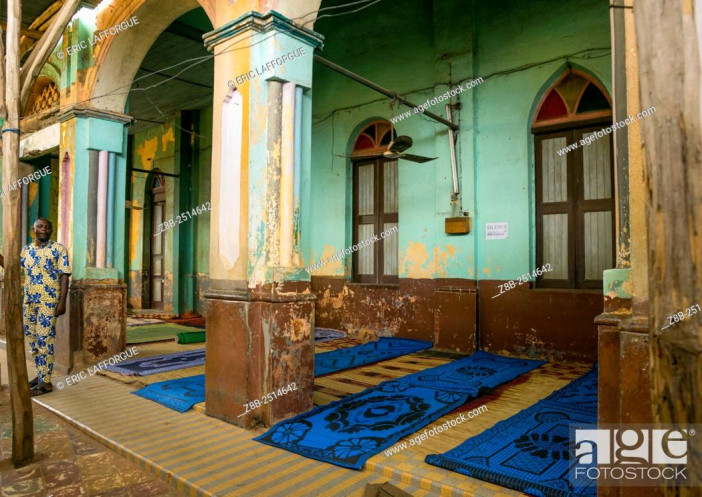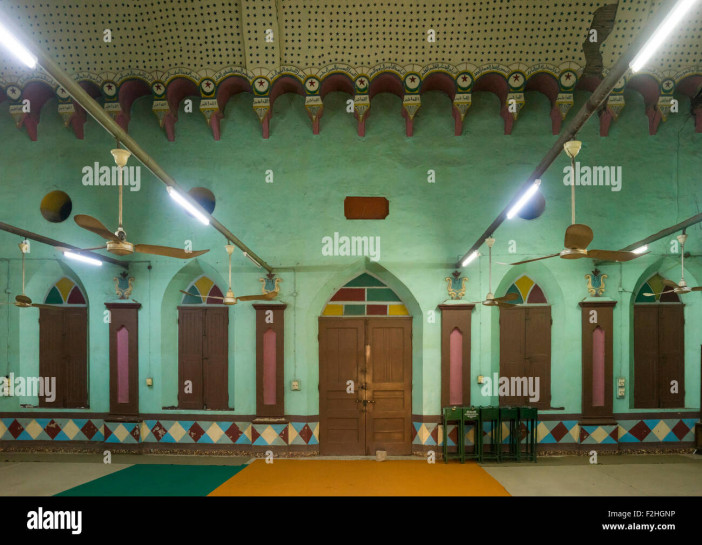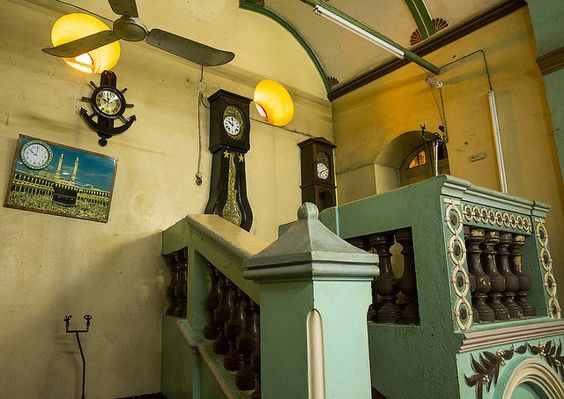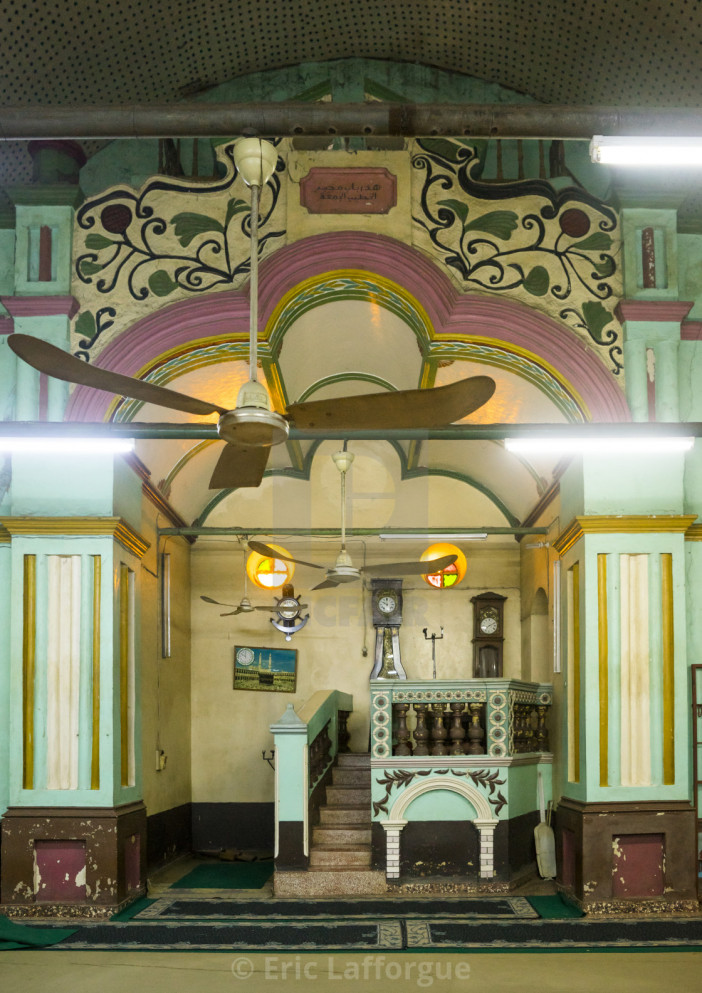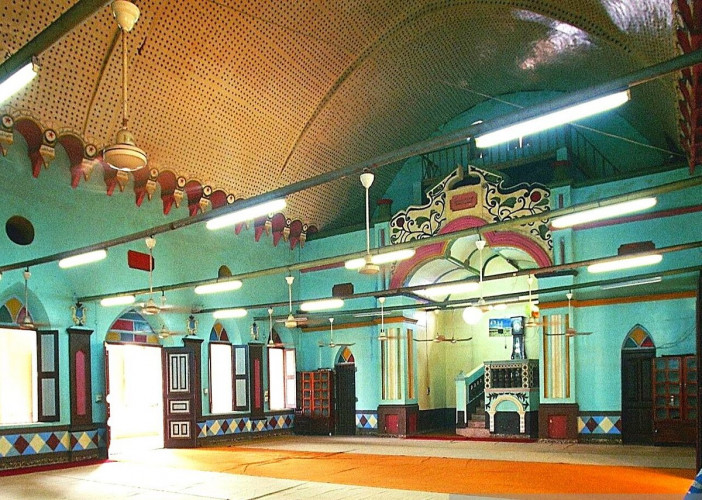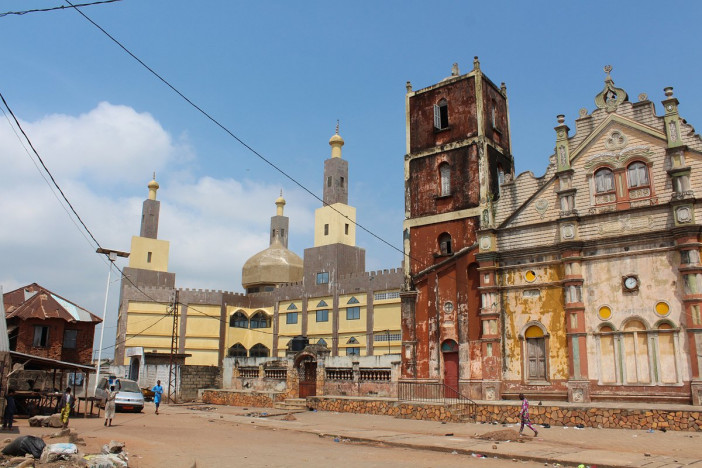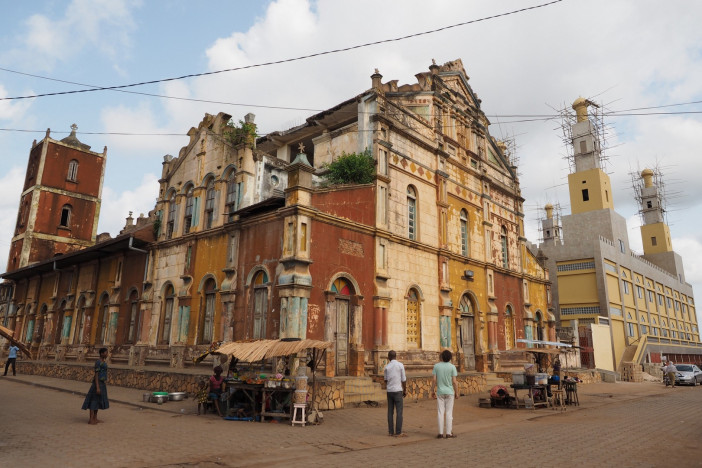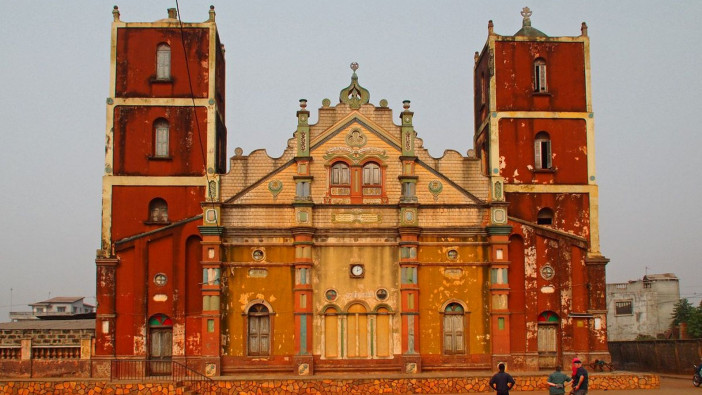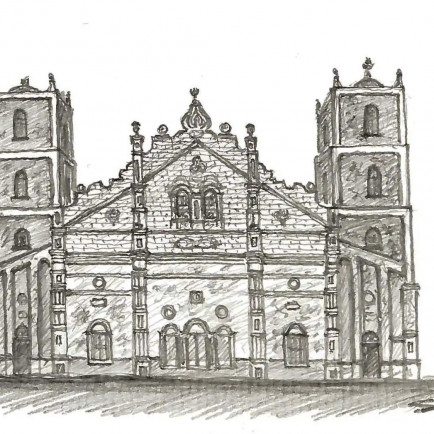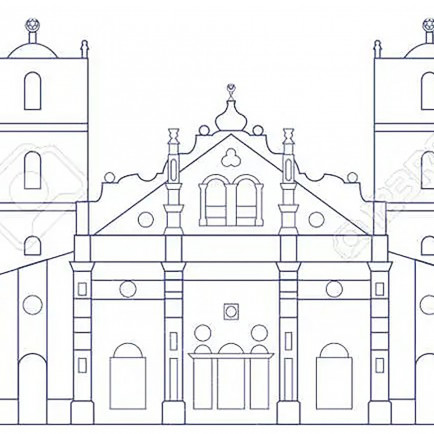Great Mosque of Porto-Novo
History
During the French Dahomey, the mosque's construction began in 1912 and was finished in 1925. Recently, the city government of Porto-Novo designated it as a historical monument.
Urban and Architectural
The Majestic Mosque of Porto-Novo, which was constructed between 1912 and 1935, initially gives the impression of being a cathedral due to its grand front, twin towers, multicolored walls, and carved wooden door. The architecture is reminiscent of churches from Bahia, a state in northern Brazil, from the 17th and 18th centuries, and is decorated in a color scheme of faded yellows, browns, greens, and blues. The Grand Mosque in Lagos served as the inspiration for the design of the Grand Mosque, which historians think was constructed by the same master masons.
Description
The mosque has two flanking bays and a long central hall that is aligned with the Qibla. Much of this structure is now in ruins. The Grand Mosque, which is still used for daily sermons, was designated a historic monument by the city.
References
https://www.islamicarchitecturalheritage.com/listings/grand-mosque-of-porto-novo
https://en.wikipedia.org/wiki/Great_Mosque_of_Porto-Novo
https://www.alamy.com/stock-photo-benin-west-africa-porto-novo-praying-room-inside-the-great-mosque-87667490.html
Details
Location
Porto-Novo Benin
Worshippers
2000
Owners
the masons of the Grand Mosque in Lagos
Year of Build
1925
Area
3700
Drawings
Map
History
During the French Dahomey, the mosque's construction began in 1912 and was finished in 1925. Recently, the city government of Porto-Novo designated it as a historical monument.
Urban and Architectural
The Majestic Mosque of Porto-Novo, which was constructed between 1912 and 1935, initially gives the impression of being a cathedral due to its grand front, twin towers, multicolored walls, and carved wooden door. The architecture is reminiscent of churches from Bahia, a state in northern Brazil, from the 17th and 18th centuries, and is decorated in a color scheme of faded yellows, browns, greens, and blues. The Grand Mosque in Lagos served as the inspiration for the design of the Grand Mosque, which historians think was constructed by the same master masons.
Description
The mosque has two flanking bays and a long central hall that is aligned with the Qibla. Much of this structure is now in ruins. The Grand Mosque, which is still used for daily sermons, was designated a historic monument by the city.


